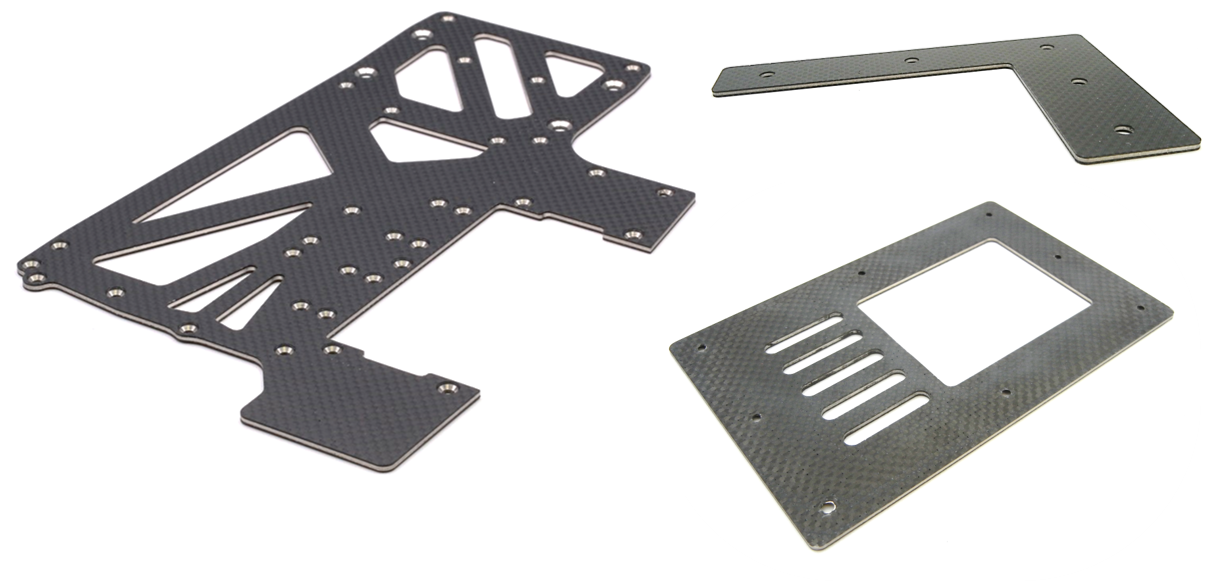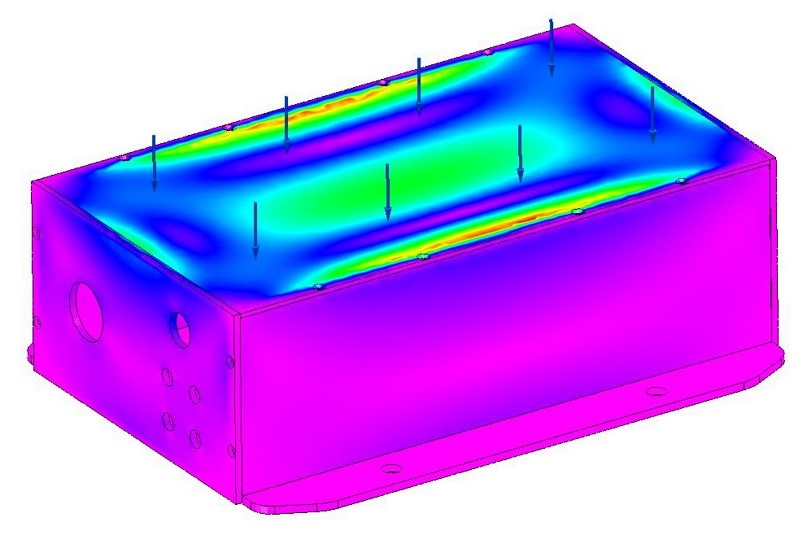Carbon Fiber Electronics Enclosures
Carbon fiber is an excellent material for both military and civilian electronics enclosures. These include rack mounted systems, shock-isolated enclosures, and project-specific custom electronics mounts and boxes. At half the density of aluminum, the utilization of carbon fiber can reduce case and support structure weight considerably. Through careful design, a composite electronics enclosure can also maintain dimension tolerances across a wider temperature range, since carbon fiber has a much lower coefficient of thermal expansion (CTE) than most metals, for example aluminum or steel. Flame retardant and high temperature resin systems can be used, allowing installation in aircraft and ships.
The engineers at Kumair have experience designing carbon fiber shock-isolated electronics enclosures, and in particular shock-isolated mounting racks made from composite materials. One of the biggest challenges in developing new shock-isolated structures for electronics is passing the MIL spec shock testing, while maintaining a minimum weight solution. This is particularly a challenge when designing a system meant for installation on a ship or aircraft. In these situations, saving every ounce matters. One of the interesting properties of carbon fiber is that the combination of low weight and high stiffness results in an increase in natural frequency. This natural frequency increase in turn results in a better decoupling of the enclosure’s first bending and torsional modes from that of the deck or bulkhead on which the system is mounted. Even at half the weight of a comparable all-metal structure, a carbon fiber shock-isolation enclosure can perform better in shock testing.
Developed by Kumair, metal core composites, such as Magnesium and Titanium core carbon fiber, substantially increase impact toughness, while maintaining most of the weight savings of a solid carbon fiber design. Metal core carbon fiber composites have the benefits of hole threading, strong countersinks, built-in electromagnetic (EMI) shielding (for example, even copper core is possible), and ease of integration into an overall assembly. This maintains the ease and strength of assembly of an aluminum enclosure, yet saves up to 40% or more weight.

Kumair offers matte/satin, high gloss, and painted finishes for carbon fiber electronic enclosures. In addition, copper paint can be used to create EMI shielding if added to the interior surfaces of an enclosure. This is often a cost-effective way to meet EMI requirements.
Kumair has experience analyzing airflow and heat generation within a wide variety of electronics systems. For example, Kumair has helped to develop radar systems and next generation heat sinks. Using computational fluid dynamics (CFD) tools, one can ensure proper airflow through the enclosure, and hence minimize design iterations and potentially expensive late project changes necessary to meet component cooling requirements.

If your organization has a challenging weight goal for an electronics enclosure project, call or email us to find out how we can help migrate your design from metal to carbon fiber composites. The engineers at Kumair have experience designing a wide variety of carbon fiber composite enclosures including shock-isolated electronics mounting racks.

